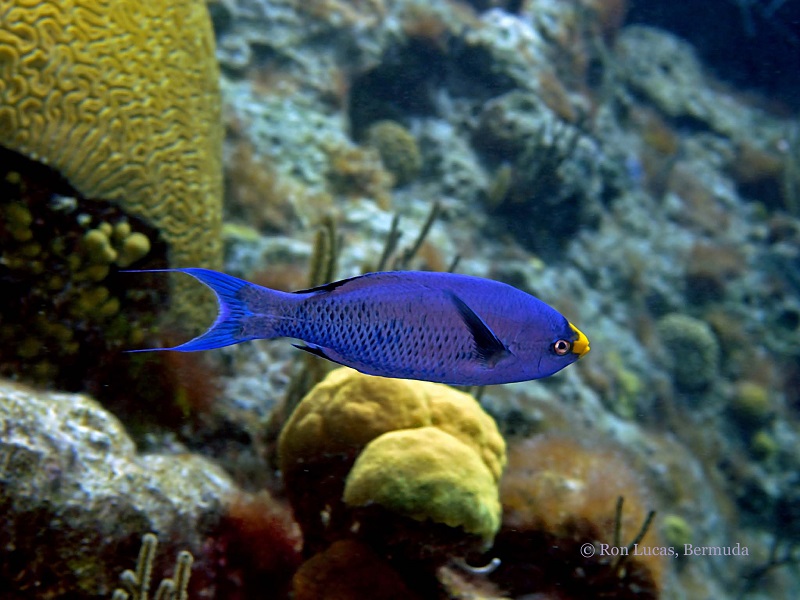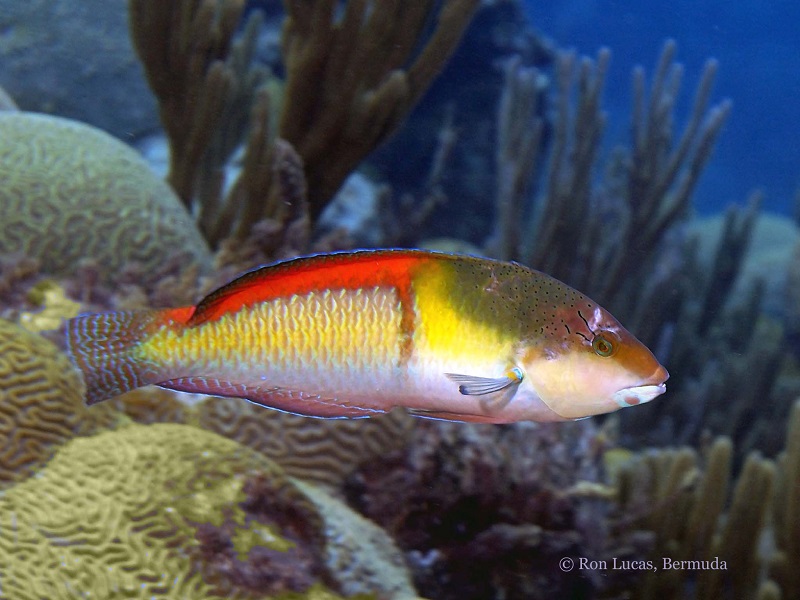Two New Unique Bermuda Fish Recognised
Scientists at the Smithsonian Institution recently recognised two new Bermuda endemic fish species. The Collette’s half beak and the Yellowfin Chromis have been known for some time, but they were only recently determined to be unique to Bermuda’s waters.
The Smithsonian Institution recently updated their authoritative 1999 Fishes of Bermuda publication with a paper published in aqua, International Journal of Ichthyology, recognizing new endemics, the Collette’s half beak [Hyporhampus colletti], first described in 2010, and the Yellowfin Chromis [Chromis bermudae].
The Bermuda Creole Wrasse is now been identified as a unique fish found in Bermuda’s waters:
The pair also recognized, thanks to photos by Ron Lucas from the Bermuda Zoological Society’s Bermuda Reef Life HD app, marked differences between the Bermuda Creole Wrasse and its counterpart found in the Caribbean, suggesting that it is also likely to be a unique Bermuda species.
William Smith-Vaniz and Bruce Collette wrote: “We recently became aware of two color photographs, one of a school and the other of a single individual… of wrasses from Bermuda [Lucas 201]) identified as Clepticus parrae.
“Terminal phase adults are distinctive in having very elongate outer caudal-fin rays, mostly solid blue body and fins and a bright yellow snout. We predict that subsequent research will show these fish to be another Bermuda endemic. All records of Clepticus parrae from Bermuda apparently are based on misidentifications of this undescribed Clepticus.”
Terminal males of the Yellowhead Wrasse have shown to differ from others found elsewhere:
The Smithsonian also noted that our terminal male Yellowhead Wrasse [Halichoeres garnoti] differs in color, to those found elsewhere in the region. Locally, these common reef fish are called “Redbacks”. The authors used a photograph from Bermuda Reef Life HD app in their paper. Further studies are planned to investigate this striking distinction.
The Smithsonian scientists also listed fishes that have not previously being authenticated as being present in Bermuda, based on photographs. The Whitenose Pipefish [Cosmocampus albirostris] was found by Russell Whayman on the reefs around Bermuda and photographed by Ron Lucas.
Gunar Mayer documented a Roughtail stingray [Dasyatis centrora] on the South shore recently, and an unusual deepwater opah [Lampris guttatus] was caught by David Soares. Judie Clee and Lydia Franks discovered the Blackear wrasse, Halichoeres poeyi, in our seagrass beds.
The Whitenose Pipefish had previously not been recognized as appearing in Bermuda’s waters:
“In all, 24 new records were listed, and five older records have been discounted as errors, reminding us that we still have much to discover about life on our reefs and that diligent citizen scientists, fishermen and naturalists all have key roles to play,” said BZS.
The research paper is available at the Natural History Museum Library at the Bermuda Aquarium Museum and Zoo.
Photographs and brief information on these new species can also be found in the “Seldom Seen in Bermuda” section of the Bermuda Reef Life HD app, available from the App Store and iTunes for iOS devices.
- Photo credits: Ron Lucas
Read More About
Category: All, Environment, News





These images are amazing.
Thanks Bernooze for allowing us the colors and vibrant structures.
I am impressed with the PLP fish (1) Blue blue my world is blue thanks to you circa/ 1965.
The OBA colored fish aka “Ribbon Fish” aka BreamIgottayou……………
The Whitenose Pipe fish is now seen frequently in the Marthas Vineyard area.
Wow these fish look beautiful and the images are very clear, hope they can find some more fish. Well that’s if they are harmless to the reefs of course.